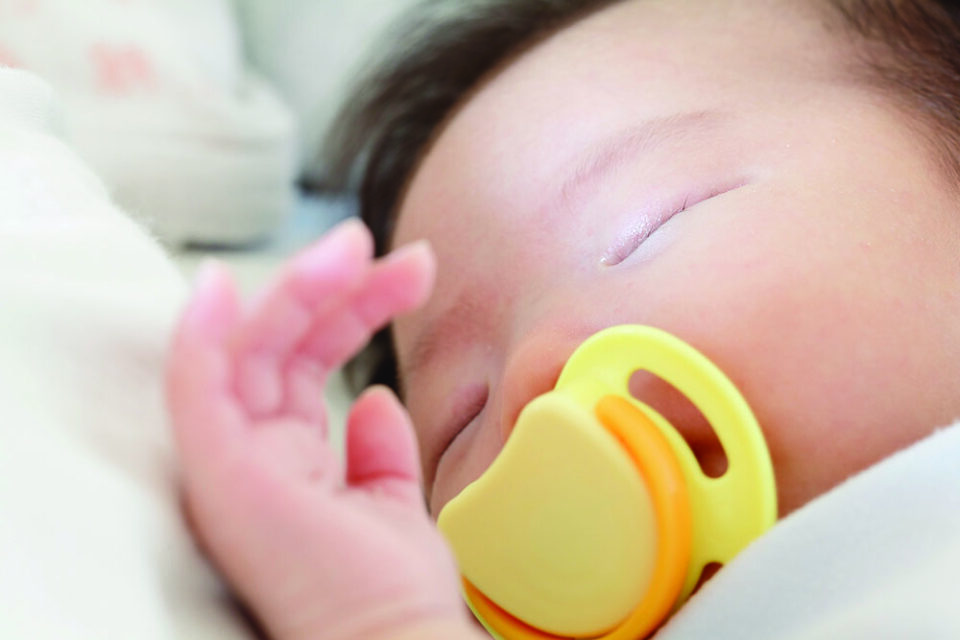Since most babies are born with a strong sucking reflex, popping a pacifier into their little mouths is often an easy fix, whether you need to soothe a fussy baby, help him fall asleep, or just distract him in between feedings. And although you might worry that using a pacifier is setting up your baby for some bad habits down the road, rest assured that proper use of the “passy” actually has several benefits. According to the American Academy of Pediatrics (AAP, healthychildren.org), pacifiers may even help to reduce the risk of Sudden Infant Death Syndrome (SIDS).
“For breast-feeding moms, a pacifier is essential,” says Steven Brinn, M.D., of Liberty Sharonville Pediatrics. He explains that moms who opt out of using a pacifier with their newborns may find themselves taking the place of the device. He also adds that breastfeeding moms really don’t need worry about nipple confusion: “Babies are smart enough to figure out the difference between a breast and a pacifier — they learn quickly that something comes out of one, and nothing comes out of the other.”
When shopping for a pacifier, the AAP recommends parents look for one-piece models that are at least 1.5 inches across so your baby can’t fit the entire thing in his mouth. According to Brinn, the best pacifier for your baby is the one he will actually use, so you may have to try a few before finding one he really likes. Once you do, purchase several, as pacifiers fall apart over time and some even come with expiration dates.
Brinn recommends parents think about getting rid of the pacifier at around 6 to 8 months, when babies are getting into transitional and table foods. “We want kids to learn about chewing, and not just staying in the sucking phase,” he says. Plus, he adds, getting rid of the pacifier at 6 months is going to be much easier (and much less traumatic for your baby) than waiting until he is 2 or 3 years old. But if you do decide to wait a while, don’t fret. Most kids will give up the pacifier on their own. If they cling to it past an age you are comfortable with, Brinn says there’s no such thing as weaning. Just box them up and throw them away so you won’t cave and give your child one when he cries. “If you do it on a weekend, by Monday, it’s done,” he says.





